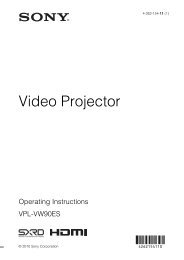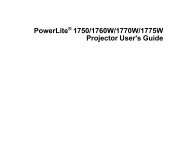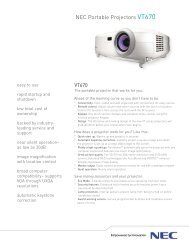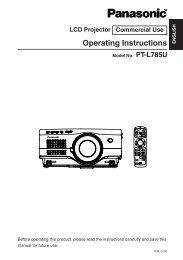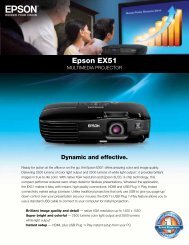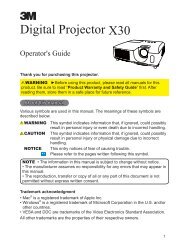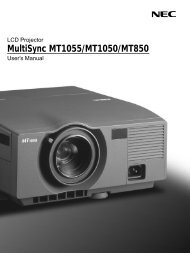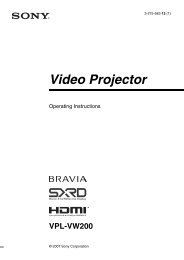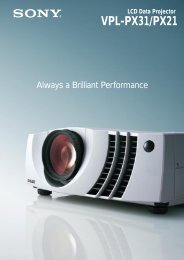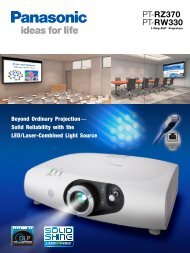CLM HD8 - Projector Central
CLM HD8 - Projector Central
CLM HD8 - Projector Central
You also want an ePaper? Increase the reach of your titles
YUMPU automatically turns print PDFs into web optimized ePapers that Google loves.
9. Image menu<br />
Image 9-74<br />
9.5.3 Advanced settings, film mode detection<br />
About film mode detection<br />
This mode detects whether film or video is displayed.<br />
When enabled, the hardware looks for tell-tale signs of 3:2 or 2:2 pull-down sequences. These are the result of converting cinema<br />
material recorded at 24 frames-per-second to the television frequencies of 60 or 50 interlaced fields per second respectively. When<br />
FILM conversion is detected, the original 24 frames-per-second are restored. This avoids deinterlacing artefacts, and results in a<br />
perfect artefact-free display. Note that in some cases (video clips, scrolling newstickers,...) FILM and VIDEO material are mixed<br />
on one screen. This may confuse the detector and cause it to go into FILM restoration mode. This will cause "jaggies" or motion<br />
artefacts. In such cases, disabling FILM mode processing is the best cure.<br />
Film mode detection is only for interlaced sources.<br />
3:2 pull-down<br />
Method used to map the 24 fps of film onto the 30 fps (60 fields) or 25 fps (50 fields), so that one film frame occupies<br />
three video fields, the next two, etc. It means the two fields of every other video frame come from different film frames<br />
making operations such as rotoscoping impossible, and requiring care in editing. Some sophisticated equipment can<br />
unravel the 3:2 sequence to allow frame-by-frame treatment and subsequently re-compose 3:2. The 3:2 sequence<br />
repeats every five video frames and four film frames, the latter identified as A-D. Only film frame A is fully on a video<br />
frame and so exists at one time code only, making it the editable point of the video sequence.<br />
2:2 pull-down<br />
The process of transferring 24-frames/sec film format into video by repeating each frame (used for PAL DVD’s) as two<br />
video fields. ( AD )<br />
Artefacts<br />
Undesirable elements or defects in a video picture. These may occur naturally in the video process and must be<br />
eliminated in order to achieve a high-quality picture. Most common in analog are cross color and cross luminance.<br />
Most common in digital are macroblocks, which resemble pixelation of the video image.<br />
How to set up<br />
1. Press MENU to activate the menus.<br />
2. Use the ▲ or ▼ key to select Image and press ENTER.<br />
3. Use the ▲ or ▼ key to select Advanced settings and press ENTER.<br />
The Advanced settings menu is displayed.<br />
4. Use the ▲ or ▼ key to select Film mode and press ENTER to toggle between [auto] or [off].<br />
86 R59770057 <strong>CLM</strong> <strong>HD8</strong> 15/03/2010



